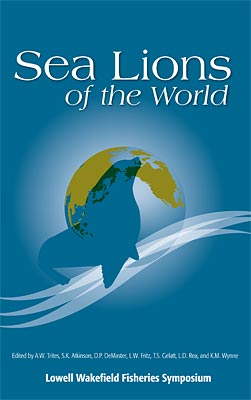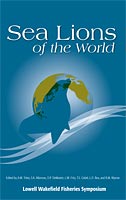
Status and conservation of otariids in Ecuador and the Galápagos Islands
J.J. Alava, and S. Salazar
- Price: $1.60 Sale: $0.00
 This is part of Sea Lions of the World
This is part of Sea Lions of the World| Format | Price | |
|---|---|---|
| PDF download [596.7 KB] Bypass cart and download |
Free | Add to Cart |
Description
Three species of otariids are found in the coastal zone and marine area of Ecuador and the Galápagos Islands. Two species, Galápagos sea lion (Zalophus wollebaeki) and Galápagos fur seal (Arctocephalus galapagoensis), are endemic to the Galápagos. The South American sea lion (Otaria flavescens) has been recorded several times on the Ecuadorian coast, and even small semi-permanent or resident male groups (~10-30 animals) have frequently been observed in two southern locations (Santa Clara Island and Punta Brava-Salinas). The most recent estimates of Galápagos sea lion and fur seal populations, conducted in November 2001 by the Charles Darwin Foundation around the Galápagos Islands, were 14,000-16,000 and 6,000-8,000 animals, respectively. In the last two decades, anthropogenic impacts and natural phenomena have affected both Galápagos pinniped populations. Anthropogenic effects include oil spills (e.g., Jessica), fishery interactions, and illegal hunting (sea lions used for trade in reproductive organs). Natural events such as the 1982-1983 and 1997-1998 El Niños caused large reductions in populations, and diseases are being monitored to try to prevent negative impacts on the islands. Sightings of O. flavescens on the coast of Ecuador have been linked to El Niños since the displacement of this species from Peruvian colonies is caused by oceanographic changes (e.g., reduction of prey). Research and conservation of marine mammals, including rescue of sea lions, have been conducted by the Charles Darwin Foundation and the Ecuadorian Foundation for the Study of Marine Mammals in the last two decades.
Item details
- Item number: AK-SG-06-01ae
- Year: 2006
- DOI: https://doi.org/10.4027/slw.2006.31



